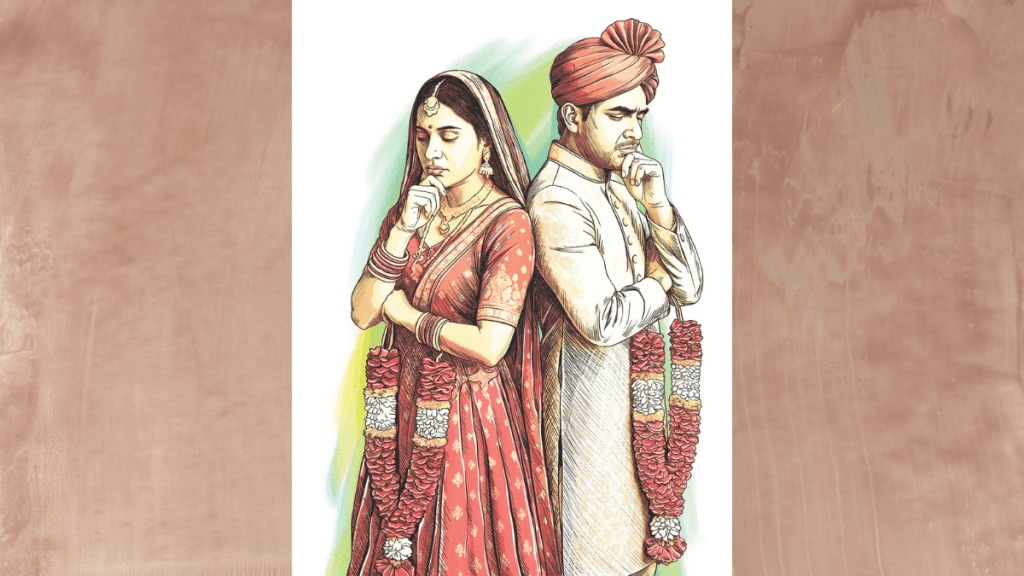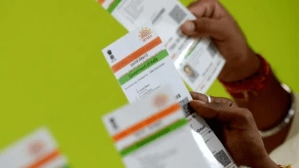Shatakshi Srivastava says she never wants to get married. For the 25-year-old IT professional working in AI and cybersecurity, the very idea of matrimony seems to be mentally taxing. Ask her why, and she throws up a plethora of reasons—disproportionate burden on women, financial liabilities, increasing cases of extramarital affairs, and so on.
Srivastava is not the only one. More and more young people are now choosing to lead complete and full lives without marriages playing a part in them. According to a 2022 ‘Youth in India’ report by the National Statistics Office, 23% of the young people surveyed said they were not interested in marriage.
In fact, this is becoming a global phenomenon. In the United Kingdom, the latest census reveals that the number of unmarried people between the ages of 25 and 35 years has “more than doubled in the past 30 years” —from 2.7 million in 1991 to 5.8 million in 2023.
Closer home, in South Korea, the phenomenon goes even further. A 2023 report by the country’s National Statistical Office found that 51% of people in their 30s were unmarried, with the percentage being as high as 60% in the capital city of Seoul. According to their 2019 census, 38% adults were unpartnered (not married or living with a partner), while this number was 29% in 1990. According to a 2019 survey by Pew Research Center too, only 38% South Korean women said they were interested in dating or relationships.
Incidentally, 2019 was also the year when the 4B movement began in South Korea. The four Bs stand for bisekseu, bichulsan, biyeonae, and bihon—meaning ‘no sex with men’, ‘no giving birth’, ‘no dating men’, and ‘no marriage with men’, respectively. Women actively disengaged from entering any relationships with men following years of violent crimes against women (a 2016 government survey in South Korea found the incidence of intimate-partner violence at 41.5%), sexism in society, unequal wages, and unequal distribution of household duties, among other reasons.
Interestingly, after the re-election of United States President Donald Trump last year, American women took to social media considering the possibility of a ‘4B-like’ movement to protest against the (speculated) curbing of women’s rights, especially access to abortion and reproductive rights.
Many Ys behind the X
The declining faith in the institution of marriage is not a black and white thing — there are many layers of grey involved. Kiara Jain, founder of Mindful Living, a lifestyle coaching platform, says that one of the big reasons that quite a few people are choosing to stay single is that women are more financially independent now.
A recent Morgan Stanley survey, too, says that 45% of working women between the ages of 25 and 44 years are “predicted to be childless and single by 2030”. Srivastava concurs: “In a typical Indian marriage, the workload for women gets doubled while that’s not the case for men. There’s the expectation that the woman will manage the household, the in-laws, the extended family, the kids, and everything else while still contributing financially through her job. I am deeply career oriented and serious about my job and I won’t want to be stuck in a place where I can’t focus on work.”
Ekta DB, a counselling psychologist and relationship coach, also emphasises that not only does financial independence give women greater autonomy, but it also offers them the ability to question traditional structures. “Many women now feel empowered to delay or opt out of marriages as well, if those doesn’t align with their life goals,” says Ekta.
Financial advisor Aparna Mundani, who is a chartered financial analyst (CFA) and associate vice president at PeakAlpha Investments, nods in agreement, pointing towards how financial independence aids people in exiting tough situations. “A financially independent woman is better equipped to leave jobs, relationships or cities that are hostile. The right conclusion to draw is not that financial independence among women is causing a decline in marriages but that it is enabling better marriages. Having control over their financial fortune is definitely helping women remove themselves out of situations that are hostile. Sometimes, it is a bad marriage,” she adds.
However, she draws an important distinction too. “A woman being employed and earning an income does not necessarily translate to her being financially independent. A couple of generations ago, a woman could’ve been earning but beyond a fraction of that income, which was considered ‘her money’, the rest of her income would have been managed by either a parent or her spouse,” she explains.
About 40% of Mundani’s clients are women who manage their money independently. “If anything, women gaining financial independence is enabling better quality marriages with stronger foundations. The exponentially increasing participation of women in money management and the ensuing financial independence are enabling better marriages,” she adds.
A newer perspective shift is also being seen in the way people are now approaching the economic responsibilities that come with marriage. Akash Giri, a 28-year-old Delhi resident who works in public relations, sees this as a big deterrent. “Building a family is expensive in today’s day and age. I don’t want to put that kind of burden on myself where I’m always having to actively save for a future family unit. And if the marriage doesn’t work out, divorce or separation can be messy and expensive too, especially if you have to get lawyers involved,” says Giri.
Srivastava agrees with Giri. She feels that a lot of people get married simply to avoid societal pressures, but they never seem to end. “Society expects you to get married, then buy a house, plan a family, and so on. In so many traditional settings, there’s the expectation of dowry too. These are expenses that I wouldn’t want to bear, and would rather like to spend on travel and my personal goals,” she adds.
Interestingly, sex health and wellness brand Hims conducted a survey in 2023 in the UK and found that 32% of the participants noted that their love lives were impacted negatively due to the cost of living crisis. This is something that Shuchi Gupta, a Mumbai-based film editor in her 30s, says gets more nuanced in the Indian context. “While women face immense pressure to be marriage-worthy, men face the pressure of having a certain amount of income and education to become desirable in the marriage market,” she says.
With these contexts in place, people, especially women, now want to make more conscious and mindful choices when it comes to marriage—be it regarding emotional compatibility, equality in the household, personal growth, career aspirations, and so on. “Back in the day, marriage was formed as an institution so that people could live in communities. But now, marriage is not seen as the only path to personal fulfillment, societal approval, or security. The traditional definition of marriage is being re-evaluated, which is a double-edged sword,” offers Ekta.
New perspectives
The increasing rates of divorce, interestingly, play a role too. Jain says, “An increase in divorce rates scares people and they choose to sometimes refrain from marriage altogether.”
An analysis of data from the Periodic Labour Force Survey by Moneycontrol in 2024 found that from 2017-18 to 2023-24, the rate of divorce in urban men increased from 0.3% to 0.5%, while that in urban women increased from 0.6% to 0.7%. Even a United Nations report stated that the rate of divorce has more than doubled in the country since the beginning of this millennium.
Even globally, boomers (or those born between 1946 and 1965) have one of the highest divorce rates of any generation living today—which has impacted how Gen Zs and millennials look at marriages and divorces. And they are opting for alternative lifestyles rather than staying bogged down in relationships that do not serve them emotionally.
There are lots of other factors as well. People have commitment issues, social media and dating apps have compounded the illusion of choice, and much more. Ekta says, “People feel getting married might equal a loss in autonomy. The idea of lifelong commitment is being weighed more critically now, especially since a lot of people have grown up witnessing the emotional cost of unhappy marriages around them. We’re seeing increasing numbers of divorce, separation, and break-ups. We’re seeing people stave off the temptation of marriage because they’re scared of the emotional cost and pain that might accompany it.”
“Many times people also choose to not believe in the institution of marriage because they are distant from their religion, and have no pressure as such to follow the norm of marriage. Another factor could be people’s shift in their perception of children. There is no rush to have children at an early age for women, with the rise of IVF, and other technologically advanced treatments,” Jain concurs.
Interestingly, a government survey conducted by South Korea in November 2024 revealed that 42.8% people in their 20s believe it’s acceptable to have children without marriage. Moreover, the country also has one of the lowest birth rates in the world, with media reports stating that its overall birth rate percentage decreased from 8% in 2022 to 0.72% in 2023.
However, this decline in faith when it comes to marriages isn’t to say that people have lost the desire for companionship. That is still very much alive. At the same time, says Ekta, “We’re seeing a shift in how relationships are viewed. There’s greater acceptance of live-in relationships, casual dating, and the choice to be single as well. With dating apps, the option to meet people is also just a click away.”
Giri agrees: “You don’t need to be married to have companionship. Live-ins are a good alternative.”
How the tables turn
While this is a cultural shift in itself, we are also seeing measures being taken on the opposite side of the spectrum. In South Korea, the government of Saha district in Busan last year launched a pilot project where it offered both men and women 500,000 won or $360 to get into a relationship. This project’s goal— through financial incentives—was to tackle the country’s concern-causing birth rate (the lowest in the world). If the couple decides to get married, they get an additional 20 million won.
The declining birth rates are a problem for other nations too. China’s Hohhot city government has initiated a “childcare subsidy policy” under which it offers up to 100,000 yuan or $13,800 per child to families that have three or more kids till the time the child turns 10 years of age.
Even Japan has been mulling about providing financial incentives to women to move to rural areas and get married— to address the declining rates of women population in the country.
Gupta has a bone to pick here. She was never opposed to the idea of marriage and grew up thinking she would be married by the time she was 26. It was the arranged marriage experience that deterred her from wanting to get into this institution—the way women are treated as commodities, the expectation that you’ll let go of your individualism, the lack of authentic experiences, and the amount of control that families exert over young couples.
However, over the years, she’s observed that society is designed only for married people. “Unmarried people are not seen as normal, functional, or contributing members of society. We find it difficult to get houses on rent, to avail loans, to sometimes even get medical opinions that are not biased and based on our marital status. We don’t have a legitimate space in society,” says Gupta.
Even Srivastava agrees, as she confesses, “We live in an extremely patriarchal world where women traditionally have to leave everything behind while men don’t. Had the footing been more equal and respectful, I would have definitely wanted to get married.”









